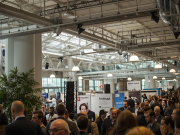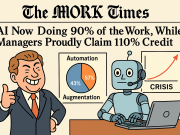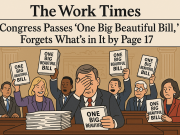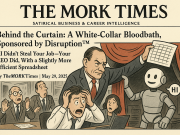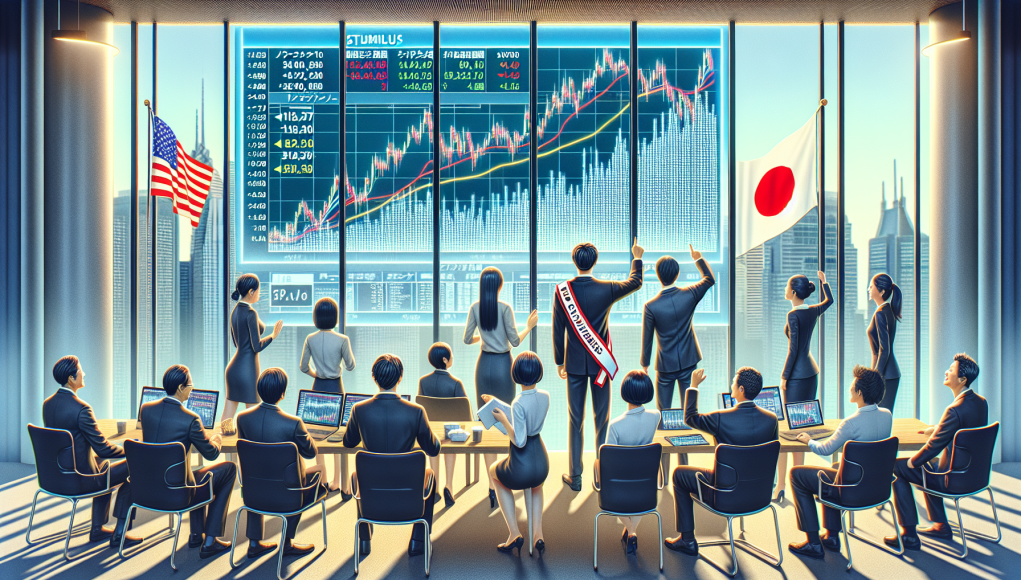When Markets Rise, Work Rewires: Japan’s Pro‑Stimulus Turn and What It Means for Jobs, Paychecks, and Companies
Japanese equities have climbed to record highs in the wake of the ruling party’s election of Sanae Takaichi, a pro‑stimulus leader whose victory has reshaped expectations about government spending and economic direction. For the people who make, move and manage work every day—employees, managers, HR leaders, entrepreneurs, and the millions whose savings and retirement plans are tied to markets—this is more than a headline. It is a practical pivot point that can alter hiring plans, corporate investment, pay conversations, workplace strategy and even the way people prepare for the future.
The market moment: optimism, policy and momentum
Markets reacted swiftly to the political signal: the prospect of looser fiscal policy, renewed public investment and a government willing to underwrite growth injected confidence into share prices. That confidence was not an abstract stroke of luck—it reflected a tangible reassessment of corporate prospects. When the state signals a readiness to spend on infrastructure, technology, or demand‑supporting measures, boards and investors reprice the future earnings stream of companies that stand to benefit.
For workers and workplaces, the mechanics of that repricing are consequential. Higher equity valuations translate into a cascade of decisions inside firms: whether to accelerate capital expenditure, expand payrolls, invest in training, buy back shares, raise dividends or refocus corporate strategy toward long‑term adaptation. Each decision touches the daily reality of the workforce.
Where the gains are likely to show up in jobs and pay
- Manufacturing and exports. A policy tilt that supports demand, combined with a potentially competitive exchange rate environment, tends to favor exporters. Expect renewed hiring in manufacturing hubs, a greater push to modernize factories and rising demand for engineers, supply‑chain managers and technicians.
- Construction and infrastructure. Fiscal stimulus often flows into public works: roads, ports, utilities and energy projects. These investments create opportunities not only for large contractors but for smaller suppliers, site managers and skilled trades, and can lead to upskilling initiatives as firms modernize methods and adopt greener technologies.
- Technology and automation. When firms seek productivity gains or to scale output quickly, they invest in automation, software and digital transformation. That shifts labor demand toward specialists in data, cloud, robotics and cybersecurity while changing the nature of many routine roles.
- Financial services and pension administration. Rising equity markets increase activity in asset management, corporate finance and advisory services. That can create roles in portfolio management, client services and financial operations, and spark upgrades to retirement plan offerings for employees.
- Domestic services and consumer sectors. If stimulus supports household income and confidence, services from hospitality to retail can expand, creating front‑line jobs and management opportunities.
What corporate boards and HR leaders will likely wrestle with
Higher market valuations create choices. Shareholder wealth rises, and with it pressure—implicit or explicit—to convert that wealth into visible returns. Companies often face a triage of options:
- Return capital to shareholders through buybacks and dividends.
- Reinvest in plants, R&D and workforce development to sustain long‑term growth.
- Build reserves to navigate future uncertainty.
How those choices resolve will shape workplaces. Prioritizing buybacks may boost stock‑linked compensation but do little to expand payroll or training budgets. Prioritizing investment can expand opportunities for employees but may delay immediate returns for shareholders. The leadership choice becomes a practical negotiation between short‑term optics and long‑term capability building—and HR and people leaders are at the center of that negotiation.
Wages, inflation and the negotiation climate
Looser fiscal policy can stoke demand and, under some conditions, push wages upward. For a nation with a long history of modest wage growth, that prospect is important. Rising corporate profits create leverage for workers to ask for pay that reflects improved company performance. The cultural shift toward stronger wage bargaining is not instantaneous, but when it happens, it changes hiring practices, retention strategies and total rewards philosophies.
At the same time, higher demand can feed inflationary pressure through goods and services prices. Employers will need to balance wage adjustments with cost management, productivity improvements and pricing power. People leaders will increasingly frame compensation conversations around a combination of base pay, performance incentives, skill development and flexible benefits.
Retirement savings and the everyday investor at work
Record equity highs matter deeply to retirement plans, employee share schemes and household portfolios. For many workers, equity gains translate into improved pension fund performance and the perceived health of retirement nests. That can embolden savers to take long‑term views, but it also underscores the need for financial literacy—understanding risk, diversification and the nonlinearity of markets.
Employers who offer retirement education, simplified investment defaults and opportunities for employees to participate in company growth through equity programs will help translate market gains into sustainable financial security for staff.
Skills, reskilling and the strategic workforce investments
A prosperous market climate is an opportunity—especially for companies that choose to invest in people. The most lasting wins from a stimulus‑driven market rally will be those that pair capital with capability. That means upskilling blue‑collar workers in advanced manufacturing techniques, retraining service workers in digital tools, and building managerial bench strength to scale operations.
Work design will matter: hybrid models, automation augmentation, and continuous learning pathways will determine which firms turn a favorable macro environment into durable competitive advantage. Companies that adopt learning cultures now will be better positioned to recruit and retain talent as competition for skilled employees intensifies.
Risks and the sober side of rally euphoria
Record highs are an expression of sentiment as much as fundamentals. Policy promises can take time to execute, and markets can be quick to price expectation and slow to absorb execution risk. Employees and managers should be mindful that headline valuations do not guarantee immediate improvements in working conditions or guaranteed wage hikes.
It is prudent for organizations and individuals to calibrate optimism with a clear view of balance sheets, cash flow and the timeline for planned investments. Scenario planning, careful workforce forecasting and flexible benefit designs can help companies navigate the gap between promise and delivery.
Practical steps for workers, managers and organizations
- For workers: Refresh your skills inventory. Identify how your capabilities tie to expanding sectors—manufacturing digitization, green energy projects, logistics and financial services. Engage in conversations about how company growth can translate into career paths.
- For managers and HR leaders: Translate market gains into credible people strategies. Prioritize investments that strengthen capability—training, apprenticeships, leadership development—and design compensation that balances immediate recognition with long‑term retention.
- For organizations: Use this moment to upgrade infrastructure and processes. Consider how public spending priorities align with corporate strategy, and be ready to move on capital projects that enhance productivity and employee engagement.
- For savers and plan administrators: Communicate clearly with beneficiaries about what market moves mean for long‑term goals. Provide tools that help workers make informed decisions about retirement allocation and participation in equity plans.
A broader invitation: shaping the future of work
Political turns and market rallies are often framed as moments for traders. They are, at bottom, moments for people. Rising markets present a rare alignment of corporate means and public willingness to invest. The most meaningful gains will come when that alignment is turned into jobs that pay, careers that grow, workplaces that learn and companies that commit to the long game.
For the Work news community, this is an invitation to reimagine the conversation: from ticker‑driven headlines to the practical choices inside workplaces. It is a call to ask which companies will use this window to retool factories, retrain workers, upgrade benefits and build workplaces that last. It is a call—equally—to workers to be ready: to learn, to negotiate, and to shape the practices that will determine how widely the gains are shared.
Closing: seize the policy moment with purpose
Markets can open doors, but what happens inside them depends on the actors who walk through. A pro‑stimulus turn in Japan has cleared a path for investment and confidence; how that path is used will determine whether record highs become a temporary crest or the base of a new, broader prosperity for workers. This is the era to think beyond prices: to think about paychecks, pathways and the kind of work we want to build in a changing economy.

